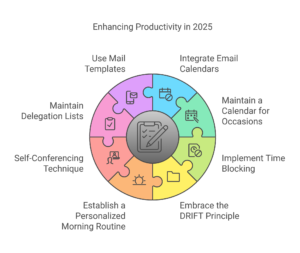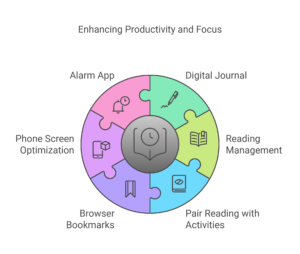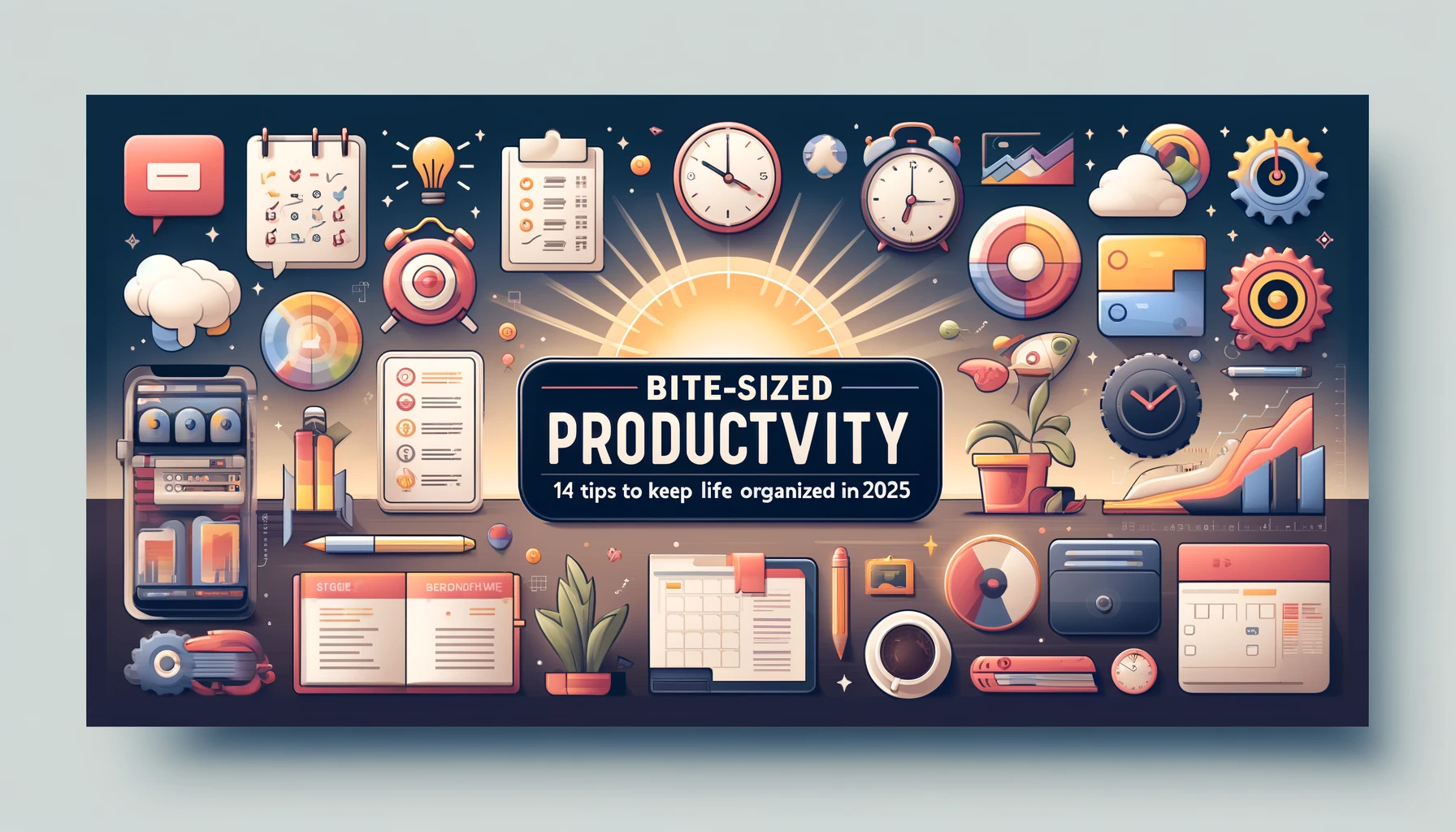Dubai Diaries: Culture, Grandeur, and Surprises
My mom did it again! Passing of 50 years meant nothing!!
I returned from my Dubai vacation and was enthusiastically sharing stories with her on the phone. Midway through the conversation, she sharply interrupted me and asked, ‘Have you written the travelog yet or not?’
And here I am, weaving together the sights, sounds, and surprises of my week-long journey to the shimmering city in the desert.
Initial Impressions
If you had asked me a day before my trip about Dubai, I might have mentioned Burj Khalifa and the Palm Jumeirah. And perhaps, from childhood memories, I’d recall stories of laborers migrating there for work—those who succeeded and those who dreamt but couldn’t. But things changed dramatically after this vacation. Travel is always rewarding when you experience a new country and immerse yourself in its nuances.
Meeting Pakistan in Dubai
The first surprise came right at the Dubai airport. My taxi driver spoke impeccable Hindi, and after a little probing, I discovered he was from Pakistan—Punjab, to be precise (oh well, they too have a Punjab!). This was my first close interaction with a Pakistani citizen. His flawless Punjabi made me feel like I was chatting with someone from back home in India. It reminded me of our shared heritage, and it was heartwarming to experience this normalcy.
This wasn’t a one-off encounter. Many Pakistani and Indian drivers crossed our paths during the trip. Dubai’s workforce is a melting pot of nationalities, with South Asians (predominantly Indians and Pakistanis) and other expatriates dominating the customer-facing roles in commercial outlets. The natives? Well, as our city tour guide quipped, “They’re either rich or very rich” – menial jobs are out of the question!
Sightseeing: Hits and Misses
Burj Khalifa
Burj Khalifa—the epitome of hype. Throngs of tourists, endless queues, and a lot of waiting. I was about to chant “Govinda, Govinda,” briefly forgetting that this wasn’t Sarvadarshanam. While the elevator ride was impressive, with its lightning speed and floor number display directly on the lift door, the aerial view from the top, the experience left me feeling it was more about the bragging rights than the thrill.

Dubai Frame
The Dubai Frame, on the other hand, was a delight. Less crowded, it offered a unique view of the city, and the glass floor at the top, akin to being on the 50th floor of a building, added a dose of excitement. It reminded me of my visit to the CN Tower in Toronto. The cherry on top? Tasting camel milk delicacies in the garden below.
Miracle Garden
Dubai’s Miracle Garden is aptly named. It’s a testament to human perseverance, creating such lush greenery in a desert. Covering thousands of square meters and featuring millions of flowers, it’s one of the most vibrant places I’ve visited. The garden is redesigned annually and operates only during the cooler months, making it a seasonal marvel.

Global Village
A short drive from the Miracle Garden lies the Global Village—a sprawling showcase of cultures. With pavilions from Turkey, Iran, India, Korea, Pakistan, Japan, Americas (both American continents in one pavilion! music to Trump’s ears, right?), Africa, and more, it would take weeks to explore everything. Limited on time, we focused on a few and left with a greater appreciation of global artistry and craftsmanship. Watching Turkish ice cream vendors in action (yes, I learned they’re quite famous for this!) was an unexpected delight. The playful antics—teasing customers by pulling the cone away at the last moment—turned buying ice cream into a fun performance. In the Indian pavilion, it was exciting to see the artist danced perfectly on the tune of the Marathi master piece – ‘Mala javu dya na ghari, aata vajale ki bara”. Enjoyed carrying back home, some mementos from Iranian and Turkey pavilions.
The Monorail Ride
The monorail ride to Palm Jumeirah was a unique experience. The elevated track offered stunning views of the Palm’s intricate design. The highlight was passing by the iconic Atlantis, The Palm, a magnificent hotel standing proudly at the edge of the island.
Desert Safari
The highlight of our trip! The desert safari offered an adrenaline rush with ATV rides, sand bashing – thrilling drive across dunes in 4×4 vehicles where the drivers skillfully maneuver the shifting sands to create a roller-coaster-like experience – and a dinner show featuring belly dancing. Learning about the vehicles’ tire adjustments for dune rides (deflated to 15 PSI) was intriguing. Oman, just 70 km away, contributes significantly to Dubai’s fresh produce, thanks to its rains—a surprising revelation amidst the arid surroundings.
Personal Productivity Tips for International Travel
Planning an international vacation is a productivity game in itself, requiring meticulous organization and foresight. It starts with ensuring that your passports are always active. Mark passport expiry dates in your calendar and set a reminder six months in advance to renew them—this simple step can save you from the stress of last-minute express options.
Begin your planning at least a month ahead by breaking it into major task categories. Start with essentials like obtaining a visa (if required), as these processes can take time. Speaking with friends who have visited your destination can provide invaluable insights and make your planning more reliable.
For popular attractions that require advance booking, secure your tickets online to avoid disappointment. Maintain a dedicated to-do list—I like to call it a “satellite to-do list”—specifically for your trip. One task on this list should be customizing your generic travel checklist to account for shopping needs and other specifics.
Another smart strategy is listing all the friends or acquaintances you might want to meet at your destination. Also, leave a day free for the last-minute ideas or adjustments, while planning sightseeing.
If you enjoy documenting your travels, consider shooting videos meticulously during the trip. Compile and edit these clips soon after you return—the longer you wait, the higher the chance they’ll get lost in the shuffle of daily life. Pleasant memories deserve to be preserved, don’t they? Finally, if writing a travelogue is on your mind, jot down key points as soon as you return. This way, even if you procrastinate a little, your notes will ensure you don’t lose the essence of your experience. I did my vacation video on Day 2 and blog on Day 20!
Dhow Cruise and Yacht Ride
The Dhow Cruise in the night was average, saved by a mesmerizing light show mid-journey. But the yacht cruise on another morning outshone it—the tranquil early morning waters, cool winter breeze, and iconic views of the Burj Al Arab made it unforgettable.
Beach Visit
Not content with just exploring the creek, we made our way to the Kite beach (I had to check the geography – it’s the Persian Gulf!). While we didn’t plan for a swim, a leisurely stroll along the pristine shoreline was both refreshing and invigorating. To top it off, our ride to the beach was in a sleek Tesla—far removed from the ubiquitous Swift Dzire back home!
Museum of the Future
The Museum of the Future—an architectural marvel—radiates mystique, though its appeal leans heavily on visually stunning exhibits rather than groundbreaking technological innovations (sorry, Teodor and Ahmad, temper your expectations!). It’s grand and impressive, but as with much of Dubai, it’s more brawn than brain.
Dubai Mall Fountain Show
No visit to Dubai is complete without witnessing the Dubai Mall’s fountain show. Larger-than-life, monochromatic, and synchronized to music, it’s a spectacle that left us in awe.
Meeting Friends
It was heartwarming to reconnect with friends in a foreign land! A special thanks to Anees, the panel doctor of the Crown Prince, and Balki, a software wizard strengthening the IT infrastructure of RTA Dubai, for making time to meet us. Their stories and insights added a personal touch to the trip, making it all the more memorable.
Observations Beyond Sightseeing
Dubai’s roads showcase impeccable discipline, reminiscent of the USA—but with distances measured in kilometers, not miles. This order is upheld by hefty fines (hundreds of Dirhams even for small slips) and the unyielding watch of street cameras, unlike the option of ‘sob-story’ persuasions to the traffic cops elsewhere. Despite carrying Dirhams, I hardly used cash—even the smallest vendors and taxi drivers had card machines.


The city’s relentless greenery maintenance stands out, with drip irrigation systems visible everywhere. Dubai exudes opulence, not just in its architecture but in its ambition to defy nature and create a haven in the desert.
Closing Thoughts
Dubai surprised me, inspired me, and left me with memories I’ll cherish forever. From its towering structures to its cultural diversity and rich experiences, it’s a city that knows how to impress—sometimes a little too well!
Subscribe to my newsletter, to get tips like this and more, directly in your inbox!
(Originally published in Times of India on January 18, 2025)
My Rules to Live By in 2025
I recently came across Darius Foroux’s 5 Rules to Live By in 2025, and they struck a chord instantly. It’s no coincidence—they perfectly encapsulate the essence of a life well lived and resonate deeply with what’s been on my mind lately:
1. Don’t get angry. Period.
2. Spend money on things that change your lifestyle for the better
3. Be calculated when it comes to working out
4. Journal more
5. Work hard and be happy
Here’s my take
1. Don’t get angry. Period.
Anger comes with a cost—both to our health and relationships. For me, the goal is not to suppress anger entirely but to weigh its cost versus benefit. Is getting angry worth the toll on my well-being? If not, it’s better to let it pass. This mindset can make life calmer and more intentional.
2. Spend money on things that change your lifestyle for the better.
I’ve always been cautious about spending—judicious, not frugal. But as I reflect on what truly enriches life, I realize it’s okay to loosen up. Investing in good food, books, quality subscriptions, grooming, clothes, travel, and other meaningful experiences adds value and joy. In 2025, I aim to embrace this balance more openly.
3. Be calculated when it comes to working out.
I’ve curated a versatile bouquet of workout routines that I genuinely enjoy and that keep me motivated—swimming, walking, weight training, dynamic and static stretches, and breathing exercises. Together, these activities help me build strength, enhance flexibility, improve cardiovascular health, and refresh both mind and body.
As I approach my 60s, my focus has shifted to consistency and sustainability. Rather than pushing myself to extremes or overdoing it, I aim to follow a realistic approach that aligns with my body’s needs and limits. It’s about nurturing a long-term relationship with fitness—one that feels both achievable and enjoyable. My goal is simple: to ensure that no day passes without incorporating some combination of these activities.
4. Take frequent breaks while at work (replacing journaling (I am doing good already)).
Here’s my addition to the list. With work and home merging into a single “context” thanks to remote setups, I often lose track of time at my work table. Hours fly by as I stay engrossed, but the toll on my body and mind is undeniable. This isn’t a new challenge; even in my earlier office-based roles, I had a tendency to stay glued to my chair.
So, my resolution? Regular breaks to stretch, hydrate, rest my eyes, and recharge mentally—simple yet essential habits for well-being. But I’m also experimenting with a new concept: nanobreaks. Every four minutes, a subtle beep reminds me to relax my entire body, take a deep breath, and then smoothly resume whatever I’m doing. It’s a small tweak, but I’m hopeful it will bring big results.
5. Work hard and be happy.
I approach this through the lens of gratitude. Life comes with its share of worries and anxieties, but I want to shift the focus to embracing it fully with the mindset: “I am luckier than most others.” This rule serves as a gentle reminder to pause, live in the moment, and appreciate the abundance already present in my life, no matter how big or small. By cultivating gratitude, I hope to anchor myself in positivity and approach each day with a sense of fulfillment and joy.
Subscribe to my newsletter, to get tips like this and more, directly in your inbox!
(Originally published in Times of India on January 04, 2025)
Bite-Sized Productivity: 14 Tips to Keep Your Life Organized in 2025
As we welcome the New Year, are you thinking about becoming a little more organized and efficient in managing your work—so you can not only excel at your job but also have more quality time to enjoy life with family and friends? If that’s on your mind, this post is here to help!
These 14 practical tips are all about integrating small, effective changes that can help bring a sense of order and productivity to your life in 2025, making everyday tasks easier to manage and ultimately improving overall well-being.
- Integrate Email Calendars
Explanation: Consolidate multiple email calendars into a single master calendar using a tool like Google Calendar.
Benefit: This avoids scheduling conflicts, ensures you never miss important meetings, and streamlines time management, making it easier to see everything at a glance.
- Maintain a Calendar for Occasions
Explanation: Create a dedicated calendar for birthdays and anniversaries, setting yearly reminders for each event.
Benefit: This helps you stay connected with friends, family, and professional contacts, fostering strong relationships without the stress of trying to remember every important date.
- Implement Time Blocking
Explanation: Allocate specific blocks of time for various activities, such as work, reading, or exercise, and use a to-do list for managing smaller tasks within those time blocks.
Benefit: Time blocking helps you manage time effectively, maintain focus, and reduce procrastination by giving each task a dedicated space in your schedule.
- Embrace the DRIFT Principle (Do it Right the First Time)
Benefit: This proactive organization saves time later, reduces stress, and ensures seamless retrieval of information, boosting overall productivity.
- Establish a Personalized Morning Routine
Explanation: Start your day by checking your calendar, planning tasks, and setting priorities to structure your day effectively.
Benefit: A structured morning routine helps you start the day with clarity and focus, making it easier to tackle tasks efficiently and be productive.
- Self-Conferencing Technique
Explanation: Regularly hold short “Scrum meetings” with yourself to plan, prioritize, and review your tasks, just like in team meetings.
Benefit: This method allows you to slow down and think. It helps identify gaps, prioritize work, and keep track of progress, ensuring that you stay on top of tasks and make informed decisions.
- Maintain Delegation Lists
Explanation: Create and maintain a list of tasks that you have delegated to others, including any dependencies, and follow up as necessary.
Benefit: Delegation lists help you manage tasks efficiently by ensuring that you stay updated on progress and that delegated work continues smoothly.
- Use Mail Templates
Explanation: Create templates for recurring emails to save time.
Benefit: Using templates helps streamline your email communication, saves time when responding to frequently asked questions, and reduces the chances of making errors.

- Maintain a Digital Journal
Explanation: Keep a digital journal, such as a spreadsheet, to track daily activities and reflect on different aspects of your life.
Benefit: This encourages daily reflection, helps maintain focus on long-term goals, and provides valuable insights into your habits, contributing to a more balanced and productive lifestyle.
- Efficient Reading Management
Explanation: Use “Read Later” apps like Instapaper or Pocket to save articles for later reading.
Benefit: Efficient reading management helps you avoid distractions while working and keeps your reading material organized, ensuring you consume content in a more intentional and productive manner.
- Pair Reading with Physical Activities
Explanation: Combine reading (or listening to audiobooks) with physical activities like walking, cleaning, or gardening.
Benefit: This approach allows you to stay productive while also maintaining physical health, making the most of your time without needing extra dedicated hours for reading.
- Optimize Your Browser Bookmarks
Explanation: Organize browser bookmarks into categorized folders and use the bookmarks bar for quick access to frequently visited sites.
Benefit: A well-organized bookmarks system saves time and reduces frustration when finding important web pages, allowing for more efficient browsing.
- Optimize Phone’s Home Screen
Benefit: A decluttered home screen minimizes distractions and enhances your focus, leading to better efficiency when using your phone for important tasks.

- Leverage Alarm App
Explanation: Use your alarm app to set reminders for routine micro-tasks such as taking medication or making calls.
Benefit: Using alarms for reminders ensures you stay on top of small but important tasks, making it easier to maintain consistency and avoid forgetting critical activities.
10 Tips for Entrepreneurs to Improve Time Management and Increase Productivity
Entrepreneurs often find themselves juggling multiple roles and tasks, requiring frequent context-switching throughout the day. In this dynamic environment, a rigid time management system can actually contribute to stress rather than alleviate it. Instead, adopting a flexible time management system can provide the optimal solution for entrepreneurs. Presented below are ten fundamental tips that collectively formulate a comprehensive time management system:
- Capture Everything: Develop a habit of capturing all your tasks, ideas, and commitments in a single trusted system. Prefer a digital tool, such as a spreadsheet to maintain a master to-do list to ensure nothing slips through the cracks.
- Establish actionable steps: Break down your tasks into concrete, actionable next steps. Employ mind maps as a valuable tool to deconstruct complex projects and tasks, utilizing collaborative brainstorming sessions with your team or engaging in individual reflection.
- Apply the Two-Minute Rule: If a task takes less than two minutes to complete, do it immediately instead of adding it to your to-do list. This rule helps prevent small tasks from piling up and becoming a source of mental clutter.
- Perform a weekly review: Reserve dedicated time every weekend to carefully review your master to-do list and create a focused to-do list specifically for the upcoming week. During this review, consider reviewing back-burner items to evaluate their suitability for inclusion in the tasks for the coming week.
- Implement a daily task review: Cultivate the practice of reviewing your week-specific to-do list every day and craft a targeted day-specific to-do list. This habit empowers you to effectively prioritize and dedicate your undivided focus to the tasks assigned for the day.
- Build an efficient digital reference system: Create and diligently maintain a well-organized digital reference system that houses all the necessary documents and resources for executing your tasks. This approach streamlines access to materials, significantly reducing time spent on searching and enhancing overall productivity.
- Utilize Checklists: Develop checklists for recurring processes or tasks that have multiple steps. Checklists help ensure consistency and reduce the likelihood of overlooking critical steps.
- Track your delegated actions: Keep track of tasks or projects that are dependent on someone else’s action. Maintain the list to follow up on these items and avoid bottlenecks in your workflow.
- Keep your calendar uncluttered: Utilize your calendar exclusively for tasks and events that have specific day and time requirements. It’s essential to recognize that if an event or task can be easily delayed or shifted, it might not be appropriate for your calendar.
- Prioritize your tasks from the to-do list: Continuously refer to your to-do list to choose your next action based on factors such as available time, current energy levels, and task priority. Embracing this spontaneous approach empowers you to optimize productivity within any given time slot.
In the dynamic realm of entrepreneurship, where versatility is paramount, a flexible approach to time management emerges as a vital asset. By integrating these ten guiding principles into your routine, you can tailor a time management system that harmonizes with your entrepreneurial journey, fostering enhanced productivity, reduced stress, and a more harmonious equilibrium between your diverse responsibilities. Embrace the adaptability that this system offers, and pave the way for both personal and professional triumph in your entrepreneurial endeavors.
Subscribe to my newsletter, to get tips like this and more, directly in your inbox!
(Originally published in Times of India on August 26, 2023)
How to Overcome Procrastination: Solutions for Six Common Personas
In Part 1 of this series, we explored six procrastination personas, each representing a unique way procrastination manifests in our lives. From the overwhelmed Deer to the overcommitted Octopus, these personas helped us understand how procrastination shows up and what holds us back.
When it comes to tackling procrastination, there are broadly two approaches to consider:
The ‘Extended Will’ Approach
This method relies on external pressures or restrictions to force action. Examples include public accountability, like announcing your goals on social media, or promising yourself a reward for avoiding procrastination. While effective in the short term, this approach can feel restrictive and doesn’t address the deeper causes of procrastination.
The ‘Root Cause’ Approach
This method goes deeper, focusing on identifying and resolving the underlying reasons behind procrastination. It’s about creating sustainable change by aligning your actions with your goals and adopting systems that work for you.
For this series, we’ve chosen the Root Cause Approach because it offers long-term solutions grounded in time-tested principles. Let’s dive into how each procrastination persona can overcome their unique challenges with strategies rooted in this approach.
1. The Deer: Tackling Overwhelm
Deer personas feel stuck when faced with unfamiliar or complex tasks, often freezing in the face of high stakes or uncharted territory. The key to overcoming this is to reduce the task’s complexity and start small:
- Break It Down: Divide tasks into smaller, manageable parts to make them less intimidating. For example, instead of “write a book,” start with “draft a rough outline.” Tools like mind maps are perfect for this.
- ‘Bird by Bird’ Approach: Borrow Anne Lamott’s analogy—focus on one small step at a time, like completing one “bird” in a school project. Small, actionable steps build momentum and reduce overwhelm.
Remember: Butterflies in your stomach? It’s time to make a mind map!
2. The Ostrich: Simplifying Routine
The Ostrich persona avoids mundane, repetitive tasks—things like sorting emails, filling out forms, or managing daily admin work. The solution lies in making the mundane manageable and even enjoyable:
- Reliable Systems: Create checklists, templates, and shortcuts to Apps and files/folders on your computing devices to streamline repetitive tasks. These tools reduce decision fatigue and make routine work quicker and less daunting.
- Energize the Routine: Add a layer of enjoyment to these tasks—listen to music, play a podcast, or pair the task with something you enjoy. This makes the process less monotonous and more engaging.
Remember: The next time you face a boring task, start saving bookmarks, creating shortcuts, and making a checklist of steps.
3. The Octopus: Managing Overcommitment
The Octopus juggles too many responsibilities, leading to overwhelm. The solution is to prioritize and align actions with your mission:
- Clarify Priorities: When everything feels important, it’s critical to step back and identify what truly matters. Focus your energy on tasks that align with your core goals and will have the most significant impact.
- Work Top-Down: Occasionally shift from bottom-up thinking to top-down planning. Create a personal mission statement, as outlined in Stephen Covey’s Habit 2, and let it guide your daily decisions.
- Learn to Say No: Protect your time by declining commitments that don’t align with your priorities. This can be challenging, but it’s essential for maintaining balance and focus.
Remember: Before taking on a new opportunity, ask yourself: what current commitment can I stop to accommodate this new one?
4. The Cheetah: Balancing Pressure and Productivity
Cheetahs often wait until the last minute to tackle tasks, believing they perform best under pressure. While urgency can be a motivator, it often leads to unnecessary stress. The solution is to evaluate your approach and find balance:
- Cost-Benefit Analysis: Write out the consequences of completing the task now versus deferring it. This exercise helps clarify whether early action could reduce stress, improve quality, or free up time for other priorities.
- Reality Check: If you find no clear benefit to starting early, stick to your natural style! But if you see potential advantages, see if you identify yourself as another persona and follow their solution.
Remember: For your next big task, conduct a cost-benefit analysis to find clarity.
5. The Sloth: Overcoming Inertia
The Sloth persona struggles with complete avoidance, feeling unmotivated and stuck. The solution is to shift your mindset and celebrate small steps:
- Adopt Foundational Habits: Start with Stephen Covey’s first three habits—’Be Proactive,’ ‘Begin with the End in Mind,’ and ‘Put First Things First.’ These habits help you take responsibility, set clear goals, and prioritize effectively.
- Small Steps with Compounding Effect: Take one small action at a time, and let the momentum build. For example, write just one sentence or tackle a single email. Small wins add up over time.
- Productivity Journal: Keep a journal to track your efforts. Recording even tiny progress serves as a motivational boost—a pat on the back that encourages you to keep going.
Remember: Surround yourself with all formats of Covey’s book and dive in until you emerge transformed.
6. The Squirrel: Slowing Down the Rush
The Squirrel persona engages in precrastination, rushing through tasks prematurely without fully evaluating them. The solution is to pace yourself systematically:
- Trust a System: Create and maintain a well-organized to-do list. This ensures you’re addressing tasks at the right time, with nothing slipping through the cracks.
- Task Triage: Regularly review and prioritize tasks. Focus on what’s most important and let less urgent work wait until its time comes.
- Balance Urgency with Quality: Resist the urge to rush by aligning your actions with realistic deadlines. This helps you achieve better outcomes without losing control.
Remember: Keep a master list of projects and perform regular triage to stay on track.
Closing Thoughts
What we’ve explored here isn’t about quick fixes or temporary solutions—it’s about building a foundation for lasting change. The principles behind these solutions are time-tested, and when combined with reliable systems, they can help you not only manage procrastination but overcome it entirely.
Core Principles to Remember:
- Deliberate Work Breakdown: Break tasks into smaller steps to reduce overwhelm.
- Trustworthy Systems for Routine Tasks: Use checklists, templates, and processes to streamline work.
- Mission and Reality Check: Align daily actions with your long-term vision.
- Personal Productivity System: Build a system that balances work and life while maximizing potential.
Thank You!
I hope this series inspires you to take meaningful steps toward overcoming procrastination. Which solution resonated most with you? Share your thoughts—I’d love to hear them!
Subscribe to my newsletter, to get tips like this and more, directly in your inbox!
Why We Procrastinate: A Look at Six Common Patterns
Procrastination! Who hasn’t experienced its pull? Whether it’s putting off a work assignment, delaying a personal goal, or avoiding that long-overdue email, procrastination is a universal challenge. Studies show that nearly everyone procrastinates to some degree, with about 20% of people identifying as chronic procrastinators.
But what exactly is procrastination?
Procrastination is the act of unnecessarily delaying or postponing something, even when we know it may lead to negative consequences. There are three key elements of procrastination:
- Delaying: Choosing to put something off.
- Unnecessarily: Lacking a valid reason for the delay.
- Knowing: Being fully aware that the delay could result in harm or missed opportunities.
The cost of procrastination goes beyond just missed deadlines. It can lead to:
- Increased stress and anxiety, as tasks pile up and become urgent.
- Lost opportunities, when delays result in missed chances.
- Lower productivity, as time and energy are spent avoiding the work rather than completing it.
But procrastination doesn’t always look the same. It shows up in different forms for different people, influenced by personality, habits, and circumstances. Recognizing the patterns of procrastination is the first step toward addressing it.
In this post, we’ll explore six procrastination personas that reflect common patterns of avoidance. By identifying these personas, we’ll gain insights into the behaviors holding us back and set the stage for meaningful solutions. Let’s uncover how procrastination impacts us and discover a path forward!
1. The Deer
Like a deer caught in the headlights, this persona represents those who are usually diligent and responsible, yet feel paralyzed when faced with new, complex, or unfamiliar tasks.
The ‘Deer’ gets overwhelmed by tasks that involve high stakes, require extensive research, or fall outside their comfort zone. It could be preparing for a big presentation, making a life-changing decision like buying a house, starting to write a book, or even managing tedious but necessary chores like renewing a passport or driver’s license.
These tasks feel intimidating because they’re uncharted territory, causing the ‘Deer’ to freeze rather than move forward. Recognizing this tendency is the first step to change.
2. The Ostrich
Like an ostrich burying its head in the sand, this persona represents those who tend to avoid routine or mundane tasks, even if they’re diligent in other areas.
The ‘Ostrich’ procrastinates when it comes to repetitive, unexciting work. Think of tasks like daily administrative paperwork, organizing emails or files, or compiling reports. These tasks aren’t necessarily difficult, but their tedious nature makes them easy to avoid.
For our ‘Ostrich’ friends, it’s not the complexity that’s daunting—it’s the monotony. Recognizing this pattern is key to change.
3. The Octopus
Just like an octopus with its many arms, this persona is constantly juggling multiple responsibilities and commitments, often stretching themselves too thin. The ‘Octopus’ is overcommitted, with too many goals and tasks competing for the same limited time.
For the ‘Octopus,’ it’s not that they lack motivation; it’s that they’ve taken on so much that they’re struggling to keep up. Imagine someone who’s volunteering while studying or working full-time, or someone balancing multiple work projects, all with tight deadlines. This constant juggling act can lead to procrastination simply because there’s too much on their plate.4. The
4. The Cheetah
This persona often believes, “I work better under pressure.”
The ‘Cheetah’ tends to delay tackling tasks until they’re urgent, driven partly by a perfectionist mindset, meaning, looking for a perfect setting to start the work but mostly by the belief that they can harness their full potential only during last-minute pressure.
Picture someone preparing for a presentation—they’ve known about it for weeks, but they wait until the night before to finalize their slides or polish their talking points. While they feel that the pressure brings out their best, this approach can lead to unnecessary stress and sometimes less-than-optimal outcomes.
5. The Sloth
Unlike our other personas, the ‘Sloth’ represents a complete avoidance of tasks. This persona lacks motivation and often feels overwhelmed to the point of not wanting to start anything at all.
For the ‘Sloth,’ it’s not about prioritizing or waiting until the last minute—it’s a sense of apathy, where the sheer volume of tasks makes any single effort feel pointless.
They may think, “There are so many things to do. What’s the point of tackling just a few? I might as well do none at all.”.
6. The Squirrel
Actually the behavior here is opposite of procrastination which is called precrastination. I have included it here just as a complimentary pattern.This persona is driven by the urge to rush through tasks, often jumping ahead without fully thinking through the details. The ‘Squirrel’ tends to make decisions too quickly, acting on impulse instead of taking the time to properly evaluate all the options.The ‘Squirrel’s’ pattern is all about acting impulsively in the name of being prompt, but this rush can sometimes backfire, causing delays or missing out on long-term rewards.
What’s Next?
Now that we’ve explored the various procrastination personas, we can better understand the patterns and behaviors that lead to procrastination. In our next post, we’ll dive into practical solutions tailored to each persona, helping you break free from these cycles and build lasting habits for productivity and success.
Subscribe to my newsletter, to get tips like this and more, directly in your inbox!
(Originally published in Times of India on November 22, 2024)







